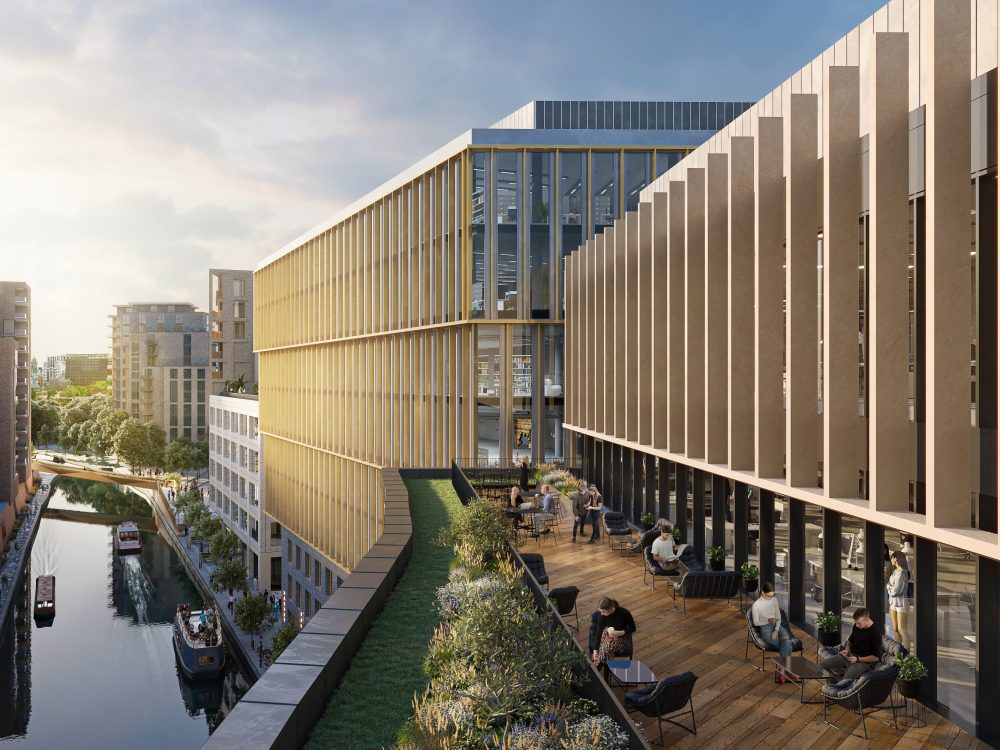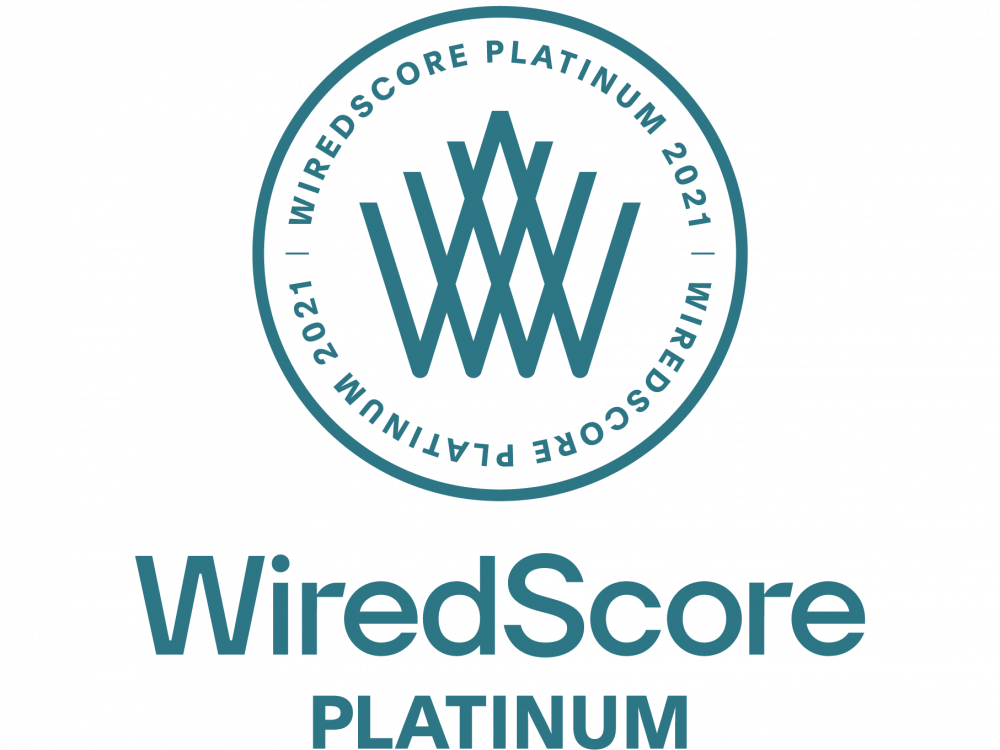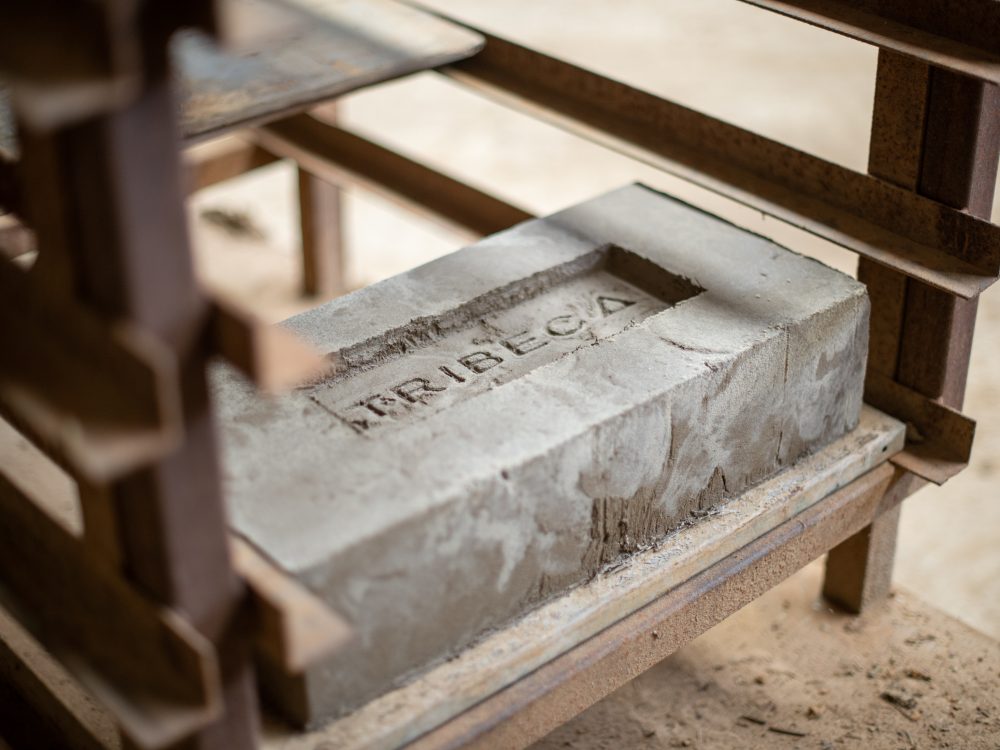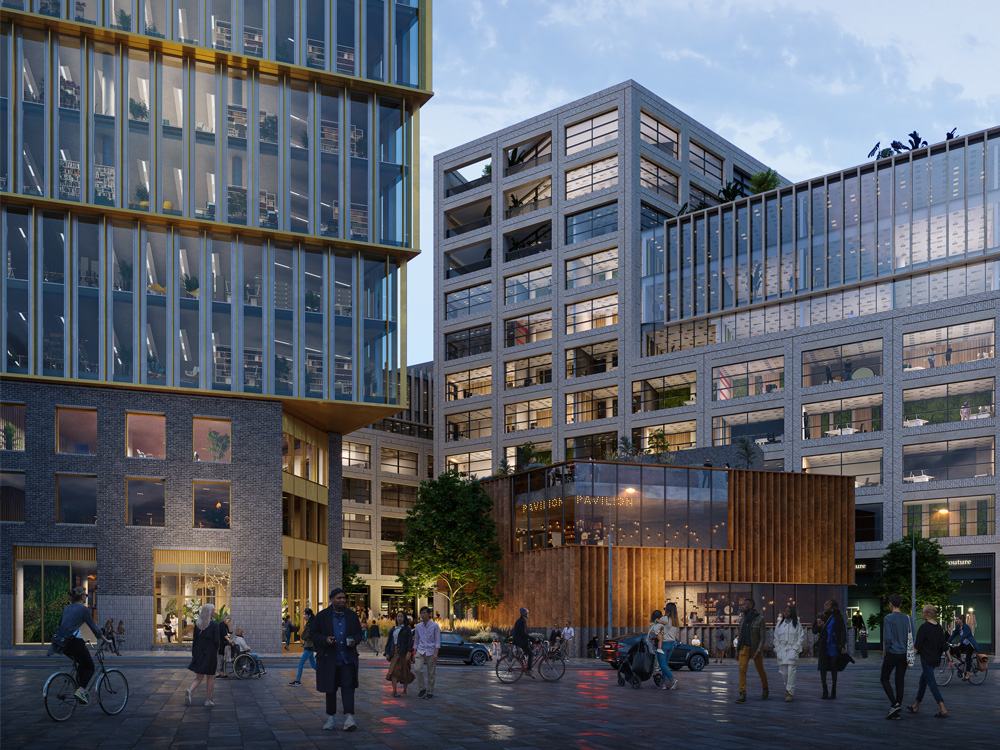Tribeca sustainability features
Our built environment has an enormous role to play in combating climate change. Buildings are responsible for about 40% of the world’s carbon emissions, and if we are to meet our net-zero pledges and keep the planet’s temperatures from spiralling, new developments have to be as sustainable as possible. That sense of collective responsibility drives the Tribeca development.

These are some of the ways Tribeca is making King’s Cross greener:
1. Air source heat pumps
Instead of natural gas boilers, the buildings in Tribeca will use low-carbon air source heat pumps. These heating systems, powered by electricity, use outdoor air to warm up air or water inside, which then circulates and heats the building.
As the National Grid moves towards renewable energy, using electricity to heat buildings is increasingly sustainable. This is part of the reason heat pumps form a significant part of the UK’s net-zero strategy.
Tribeca is also required to meet the London Plan’s target of a 35% reduction in carbon emissions, compared to levels set in building regulations from 2013. However, by using heat pumps, the development is able to exceed this target and save at least 44% in emissions in the first phase of its development – the Apex building.
2. Blue roofs
Tribeca’s roofs will be able to store rainwater as a way of using and re-using natural resources. With a ‘blue roof’ storage system, the buildings can tap into rainwater reserves for other uses, such as flushing toilets and watering plants.
Rainwater can also help cut the energy required to cool buildings in two ways: by supplying the water needed for the air source heat pump system and by watering rooftop plants, which help insulate the building and limit heat loss.
Moreover, blue roofs have a positive impact on the wider area. Because cities don’t have many surfaces that can soak up rain, having buildings store some of it can help urban areas cope with rainfall and avoid flooding, especially in extreme weather conditions.
A further benefit is that by eschewing a gas-fired heating system, Tribeca avoids releasing pollutants into the air, such as nitrogen oxide.

3. Solar shading
Indoor spaces need prominent windows because people feel and work better in natural light. But having a lot of glazing in a building can also result in a heat trap, with sunlight coming into the space and raising temperatures beyond comfortable levels.
One solution is installing features that control the amount of heat and light that enters the building. Examples include overhangs, canopies, internal blinds and, of course, trees and other plants.
By incorporating these features, indoor spaces can maintain optimal temperatures for their users, whether they are at home or at work. Moreover, the building becomes less reliant on cooling systems and, therefore, uses less energy and emits less carbon. Even when using highly efficient heat pump systems, every bit of energy saving helps.
4. BREEAM Excellent rating
Buildings with a BREEAM rating are recognised to have strong sustainability credentials. The rating system assesses a range of factors, including energy, materials, wellbeing, waste, water and pollution. Each category has a range of targets, which if achieved, translate to points, or ‘credits’.
As part of its development conditions, Tribeca’s non-residential buildings must achieve at least a ‘Very Good’ rating and aim for ‘Excellent’. Additionally, they need to achieve at least 60% of credits in the energy and water categories and 40% in the materials category.
The development has exceeded those minimum requirements, achieving a BREEAM ‘Excellent’ rating, which places it among the top 10% most sustainable buildings in the world.
Setting an example of sustainable development at the heart of London is precisely what Tribeca was designed to do. We hope others – in our community and elsewhere – will be inspired to do the same as we work towards a decarbonised world.


